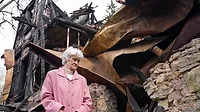Prequalifying Property Restoration Projects: Sometimes the Best Jobs are the Ones You Didn’t Take
Restorer’s Digest

Photo credit: AndreyPopov/iStock / Getty Images Plus via Getty Images.
Every restoration company encounters a certain percentage of projects that turn out to be undesirable, unprofitable or uncollectible. I like to call these jobs the rotten eggs of restoration.
Oftentimes this can be the direct result of restorers failing to prequalify or vet potential jobs when they are still leads. The definition of prequalifying or vetting a job simply means to make a careful and critical examination before committing yourself, your resources or your manpower.
In terms of insurance restoration work, restorers often take or are forced to take jobs (if you do program work) without vetting them. This will ultimately lead to disaster if you don’t recognize the red flags early on or know how to screen potential jobs before you get neck-deep into a nightmare.
In the restoration industry, salespeople are often compensated to some degree by a commission percentage of gross sales. The advantage of this arrangement is that the salesperson becomes highly motivated to sell as much as possible in order to make the most commissions and have unlimited earning potential. The disadvantage of this is that there is no “off switch” and this can make salespeople only interested in posting big sales numbers each month without any regard to the outcome when the job is completed.
In my experience, the restoration jobs that tend to be the most problematic are those where all or part of the work has to be paid outside of insurance or out-of-pocket by the property owner.
Here are nine points to consider when job leads are called in:
-
Q. Is the loss covered by insurance?
A. If the client is paying for the work out of pocket, this is known as “private work.” You can rest assured that they will most likely get a few comparative bids and won’t be too excited about paying you off of Xactimate line item prices. If you only want to do work where insurance proceeds will compensate you, then you may want to pass on jobs that don’t have adequate insurance coverage. -
Q. Does the policy have recoverable depreciation?
A. Some policies are restricted to the actual cash value or depreciated value of the building’s materials. If the depreciation is not recoverable, the amount needed to do the work will be reduced by the amount of depreciation the adjuster subtracts, which will cause a restoration budget shortfall. This can expose the insured to an out-of-pocket expense that they may not have realized at the time you signed a work authorization or contract. -
Q. How much is the deductible?
A. If the deductible is more or close to the cost of repairs, you may have a tough time collecting as this will be another out-of-pocket expense scenario. These days, more and more insurance agents are encouraging property owners to buy policies with deductibles of $10,000 to $25,000 or more to reduce premiums. - Q. Will there be coverage or enough coverage for the work you’re asked to do?
A. Some types of losses, such as mold and sewer backups, can have very limited amounts of coverage. Other types of losses may not have any coverage at all, such as floods from hurricanes or rivers overflowing, earthquakes, construction defects, etc. Other issues to watch out for are detached structures like garages or barns or losses that require extensive building code upgrades. Detached structures and code upgrades typically have their own sub-limits, which can be far less than what may be needed to rebuild. -
Q. Is the loss a condominium?
A. Condo policies are notorious for having very low limits of coverage for building-related repairs. Oftentimes the costs for emergency services or water mitigation can wipe out much of the coverage needed to do the reconstruction work. Personally, I try to avoid condo losses, especially considering that you may have to face a spicy HOA board! -
Q. Is the client looking to get the work done or just wanting to use you as a bidding service?
A. I like to ask what the potential client is looking for before sending out an estimator. This can save you a lot of time, money and resources if you are not in the habit of doing free estimates all over town. -
Q. Is the property owner behind in their mortgage payments?
A. On larger losses, insurance companies typically include the mortgage company on the checks for the building repairs or reconstruction. In situations where a property has a mortgage and the property owner is behind on their payments, mortgage companies can and will deduct what is owed from the repair proceeds. This situation often indicates that the property owner may be having financial problems and may not be able to pay for the shortfall of repair proceeds that the mortgage company took. -
Q. Is a public adjuster involved in the claim?
A. If a public adjuster is involved in the job, know right off the bat that 10% or more of the claim has to be paid for their services. Although you as a restorer are not obligated to pay their fee, the insured will be and if you are not willing to somehow cover the PA’s fee, the insured will most likely look for a contractor who will. -
Q. When was the building built and has it been tested?
A. This is important to know in case there will be asbestos or lead abatement necessary. Sometimes the cost of abatement can significantly reduce the amount you have to work with to do repairs.
Other things to consider include:
- Client’s personality and attitude
- Distance and travel time to the job
- Is the job too small or too big?
- Is the job in an area where you don’t want to work?
- Will you have to work off of someone else’s estimate?
- Will you be allowed to issue supplements?
If you would like more information on this topic, please feel free to contact Sean Scott at info@ChampionConstructionInc.com or call (858) 349-2262.
Looking for a reprint of this article?
From high-res PDFs to custom plaques, order your copy today!









